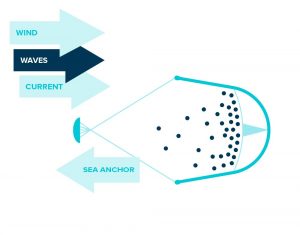
Young Scientist Spotlight: Boyan Slat
Even before Boyan Slat had a worldwide spotlight aimed at him, he was interested in science in a big way. In 2009, when he was 14, this teen from the Netherlands made it into the Guinness Book of World Records by simultaneously launching 213 water rockets (he had help from some Delft University of Technology students). That record has since been broken, but Slat hasn’t been resting on his laurels.
When he was 16, he went diving off the coast of Greece and saw “more plastic than fish.” His passion for cleaning up world’s waterways began then and there. He began to research what it would take to accomplish this, and realized what a daunting task it would be with the traditional methods of using boats to drag nets to chase after the plastic.
Instead, he devised a passive concentration plan, using the ocean’s currents which already converge into gigantic “garbage patches.” His idea was to let those ocean currents bring the plastic to the nets. He gave a TEDx talk in 2012, but his idea didn’t catch on right away. So he took a risk.
After just six months into his university studies at TU Delft, he left school and started The Ocean Cleanup. By 2015, he had completed a research expedition to the Great Pacific Garbage Patch, and had begun scale model testing of his concept. In 2016, the first prototype went into the North Sea. As with most prototypes, it needed some design tweaks, such as using smaller collectors, and more of them, instead of fewer, larger ones.
In 2018, the first system was launched in the Pacific Ocean. It also experienced difficulties, but the group took what they learned to make improvements. By December of 2019, they were successfully removing plastic from the Great Pacific Garbage Patch.
How exactly does it work? A plastic barrier floating on the ocean’s surface has a three meter deep screen below it, which will trap plastic without disturbing the marine life below. Sensors and transmitters are attached, so it can communicate via satellites to a ship that will collect the garbage every few months.
 And what happens to all that plastic that comes out of the water? The plan is to recycle it into products that can be sold, which will then fund the continuation of the project. The goal is that by September 2020, the first products made out of plastic from the Great Pacific Garbage Patch will be available.
And what happens to all that plastic that comes out of the water? The plan is to recycle it into products that can be sold, which will then fund the continuation of the project. The goal is that by September 2020, the first products made out of plastic from the Great Pacific Garbage Patch will be available.
Contrary to its name, The Ocean Cleanup is also working on getting garbage out of rivers. Since most of the trash in the ocean gets there from rivers, it’s a good proactive move. Check out the HABLOG post about cleaning rivers here.
Of course, there are always critics. Some people feel that this plan doesn’t do enough to reduce the plastics that enter our waterways in the first place, or address the culture of disposability. Slat isn’t fazed by this. He feels that instead of being an either-or situation, efforts need to be made on both ends. Minimizing plastic use from the beginning is vital, but taking care of what’s already out there matters, too.
Follow Boyan Slat on Twitter here.
Sources:
- https://www.theverge.com/2019/1/9/18175940/ocean-cleanup-breaks-plastic-pollution-silicon-valley-boyan-slat-wilson
- https://www.boyanslat.com/index.html
- https://theoceancleanup.com/
- http://www.24oranges.nl/2009/06/21/teenager-breaks-water-rocket-shooting-record/
- https://www.theguardian.com/environment/2019/oct/03/ocean-cleanup-device-successfully-collects-plastic-for-first-time
Curriculum Reference Links
- Chemical World / Sustainability / 10: Students should be able to evaluate how humans contribute to sustainability through the extraction, use, disposal, and recycling of materials
- Nature of Science / Science in Society / 10: Students should be able to appreciate the role of science in society; and its personal, social, and global importance; and how society influences scientific research.


